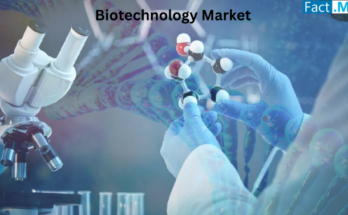Mass spectrometry is a powerful analytical technique used to identify and quantify the composition of chemical compounds and elements in a sample. It operates based on the principles of ionization, separation, and detection of charged particles. In a mass spectrometer, a sample is first ionized, meaning its molecules are converted into charged particles (ions). These ions are then separated based on their mass-to-charge ratio (m/z) by subjecting them to an electric or magnetic field, which causes the ions to move along a defined path. At its core, mass spectrometry is a technique that measures the masses of molecules. It separates compounds based on their mass-to-charge ratio and provides insights into their chemical structure and composition. This technique is used to identify unknown compounds, quantify known substances, and study molecular interactions.
The mass spectrometry market is expected to be driven by various factors such as the surge in the use of spectrometry in different applications, rapidly increasing investments in Medical R&D and a surge in sustainability and green initiatives.
The Evolution of Mass Spectrometry: Major Highlights
Mass spectrometry (MS) is a cornerstone technology in personalized medicine, aiding in biomarker discovery and validation for tailored treatments. It identifies disease-related molecules, enhancing diagnostic precision and informing patient care decisions.
In drug research, MS is evolving with automation and high-throughput capabilities, accelerating data analysis and boosting reliability. This streamlines pharmaceutical research, increasing efficiency and productivity.
MS’s versatility extends to innovative techniques like ambient ionization, enabling direct sample analysis without extensive preparation, benefiting clinical diagnostics and environmental monitoring. Combining mass spectrometry with complementary methods like chromatography and nuclear magnetic resonance deepens sample insights, enabling comprehensive analysis.
In clinical settings, Mass spectrometry aids disease diagnosis, monitoring, and drug assessment due to its exceptional sensitivity and specificity. It also contributes to environmental analysis and food safety, detecting contaminants, pollutants, and residues, addressing sustainability and safety concerns. Portable Mass spectrometry devices further revolutionize on-site analysis in various domains, including environmental monitoring, food safety, and clinical diagnostics. Mass spectrometry stands as a pivotal technology, driving innovation, precision, and safety across multiple sectors.
As per this detailed Fact.MR research analysis, the global spectrometry market size accounts for a valuation of US$ 18.75 billion in 2023 and is forecasted to climb to US$ 37.55 billion by the end of 2033.
Diverse Types of Mass Spectrometry:
- Gas Chromatography-Mass Spectrometry (GC-MS): This combines gas chromatography’s separation power with mass spectrometry’s detection capabilities. It is used in drug testing, environmental analysis, and identifying trace substances. A forensic lab uses GC-MS to analyze urine samples from individuals suspected of drug use. The gas chromatograph separates the components in the sample, and the mass spectrometer detects and identifies specific drug compounds, such as cocaine metabolites or opioids.
- Liquid Chromatography Mass Spectrometry (LC-MS): LC-MS pairs liquid chromatography with mass spectrometry, excelling in analyzing complex mixtures like biological samples. In a proteomics laboratory, LC-MS is employed to analyze a complex mixture of proteins extracted from a cell. Liquid chromatography separates the proteins, and the mass spectrometer identifies and quantifies individual peptides, aiding in the study of protein interactions and cellular processes.
- Matrix-assisted laser Desorption/Ionization Mass Spectrometry (MALDI-MS): MALDI-MS is used for analyzing large biomolecules like proteins and peptides. A laser beam vaporizes a matrix-coated sample, producing ions for analysis. Researchers analyze a protein sample from a patient’s blood using MALDI-MS. The sample is mixed with a matrix and dried on a target plate. A laser beam vaporizes the matrix, generating ions from the proteins. The mass spectrometer then determines the mass of the ions, aiding in the identification of disease-related proteins.
- Electrospray Ionization Mass Spectrometry (ESI-MS): ESI-MS is used for analyzing polar and thermally labile molecules, often in biochemistry. A charged solvent generates ions from the sample. In pharmacokinetics research, ESI-MS is used to analyze metabolites of a newly developed drug. Researchers introduce the drug into the mass spectrometer through electrospray ionization, and the resulting ions provide insights into how the drug is metabolized in the body.
- Time-of-Flight Mass Spectrometry (TOF-MS): In TOF-MS, ions’ flight times through an electric field reveal their masses. It’s known for its high-resolution and accurate mass measurement.
- Quadrupole Mass Spectrometry: Quadrupole MS uses four parallel rods to selectively transmit ions based on their m/z ratios, allowing for precise analysis and filtering. In pharmaceutical manufacturing, quadrupole MS is used to ensure the quality and purity of drug compounds. The quadrupole filters ions based on their m/z ratios, helping to quantify active ingredients and detect impurities.
Mass Spectrometry’s Vital Role in Pharmaceuticals:
Mass spectrometry (MS) is an indispensable tool in the field of pharmaceutical development and quality control. In its multifaceted role, MS serves as the guardian of drug compound identity, ensuring that the right molecular entities are at the core of research and development endeavors. By meticulously measuring the precise mass of a compound, scrutinizing it against established standards, and dissecting its fragmentation pattern, MS provides irrefutable evidence regarding the compound’s structure. This meticulous verification process is instrumental in averting costly errors, guaranteeing that pharmaceutical efforts are firmly rooted in the correct molecular foundation.
Beyond its role in identity confirmation, MS stands as a stalwart defender of pharmaceutical safety and efficacy. It possesses the uncanny ability to detect minuscule impurities and contaminants within drug formulations, a task of paramount importance as even the slightest impurity can jeopardize a drug’s effectiveness and safety. Through the power of MS, these impurities are not only identified but also quantified, ensuring that the final pharmaceutical product conforms to stringent regulatory standards and poses minimal health risks to patients.
In the pursuit of pharmaceutical excellence, precision is of paramount importance, particularly when it comes to dosage. Here, MS’s exceptional sensitivity comes to the fore, enabling the exact measurement of active compound levels in drug formulations. This capability empowers manufacturers to maintain consistency in dosages, thus assuring that patients consistently receive the intended therapeutic effects, while simultaneously minimizing the risks associated with under- or overdosing.
Moreover, the influence of MS extends deep into the realm of drug metabolism and bioavailability. MS aids in the identification of metabolites that emerge during drug metabolism, a crucial aspect in optimizing drug design, predicting potential side effects, and ensuring a drug’s real-world effectiveness and safety. Additionally, MS is an invaluable tool for assessing a drug’s bioavailability, facilitating the study of absorption rates, comparing various formulations, and confirming that the drug reaches its intended target within the body at appropriate concentrations. In this multifaceted manner, mass spectrometry serves as an unsung hero, safeguarding the integrity, quality, and efficacy of pharmaceutical products for the betterment of human health.
Top companies in the Mass Spectrometry Industry:
- Thermo Fisher Scientific (NYSE: TMO): The company offers a comprehensive range of mass spectrometry solutions for diverse applications.
- Agilent Technologies (NYSE: A): Agilent Technologies is known for its cutting-edge instruments and solutions.
- Waters Corporation (NYSE: WAT): The company is renowned for its LC-MS systems. Moreover, Waters is a key player in analytical chemistry solutions.
- Bruker Corporation (NASDAQ: BRKR): Bruker Corporation is a company that offers a spectrum of mass spectrometers catering to research and industrial needs.
Mass spectrometry is a transformative analytical technique that’s shaping industries through precise molecular insights. As technology advances and applications diversify, mass spectrometry continues to be a driving force behind scientific discovery, quality assurance, and innovation across the globe.




